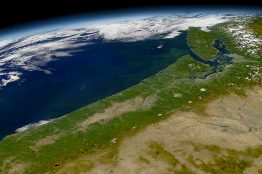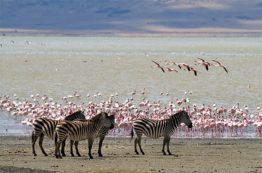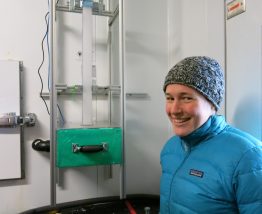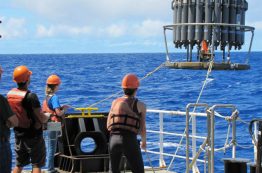Very occasionally, Earth gets bombarded by a large meteorite. But every day, our planet gets pelted by space dust, micrometeorites that collect on Earth’s surface. A University of Washington team looked at very old samples of these small meteorites to show that the grains could have reacted with carbon dioxide on their journey to Earth. Previous work suggested the meteorites ran into oxygen, contradicting theories and evidence that the Earth’s early atmosphere was virtually devoid of oxygen.
Read more at UW News »Eric Steig named chair of the Department of Earth and Space Sciences
The UW College of the Environment is pleased to announce that Eric Steig has agreed to serve as chair of the Department of Earth and Space Sciences (ESS), effective February 1, 2020, through June 30, 2023. Steig is a glaciologist and isotope geochemist who studies how the climate behaved in the past to learn what it can tell us both about the effects of climate change today, and how it will change in the future.
Read more »Life could have emerged from lakes with high phosphorus
Life as we know it requires phosphorus. It’s one of the six main chemical elements of life, it forms the backbone of DNA and RNA molecules, acts as the main currency for energy in all cells and anchors the lipids that separate cells from their surrounding environment. But how did a lifeless environment on the early Earth supply this key ingredient?
Read more at UW News »How do we know so much about ancient climates?
Scientists know a lot about the Earth’s climate. Over the past sixty years, they have collected temperature and precipitation information, measured the amount of carbon dioxide in Earth’s atmosphere, and charted the changing weather. But what if we want to compare today’s climate to past climates—say, a million years ago or more? Traces of those past climates—referred to as paleoclimates—remain in rocks and ice as particles that once made up the ancient atmosphere, rain and soil.
Read more »New study tracks sulfur-based metabolism in the open ocean
One of the planet’s most active ecosystems is one most people rarely encounter and scientists are only starting to explore. The open ocean contains tiny organisms — phytoplankton — that perform half the photosynthesis on Earth, helping generate oxygen for animals on land. A study by University of Washington oceanographers, published this summer in Nature Microbiology, looks at how photosynthetic microbes and ocean bacteria use sulfur, a plentiful marine nutrient.
Read more at UW News »





